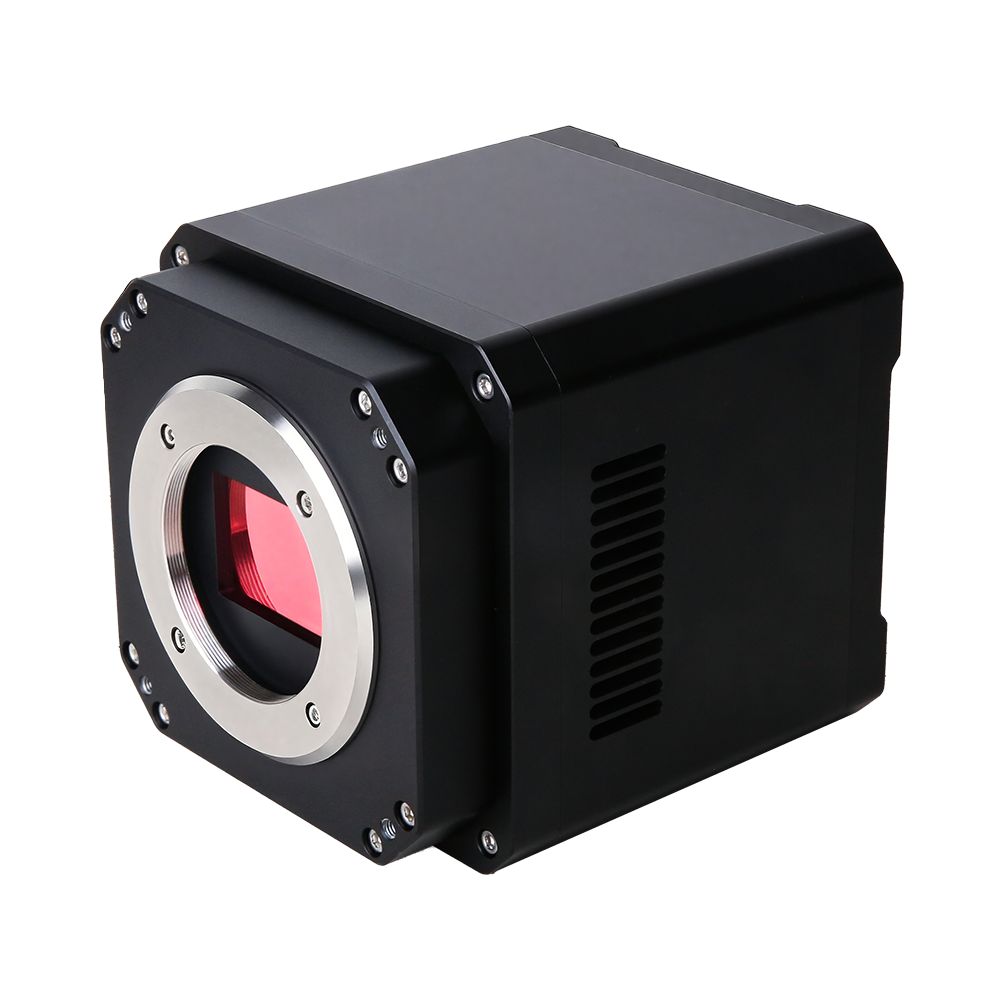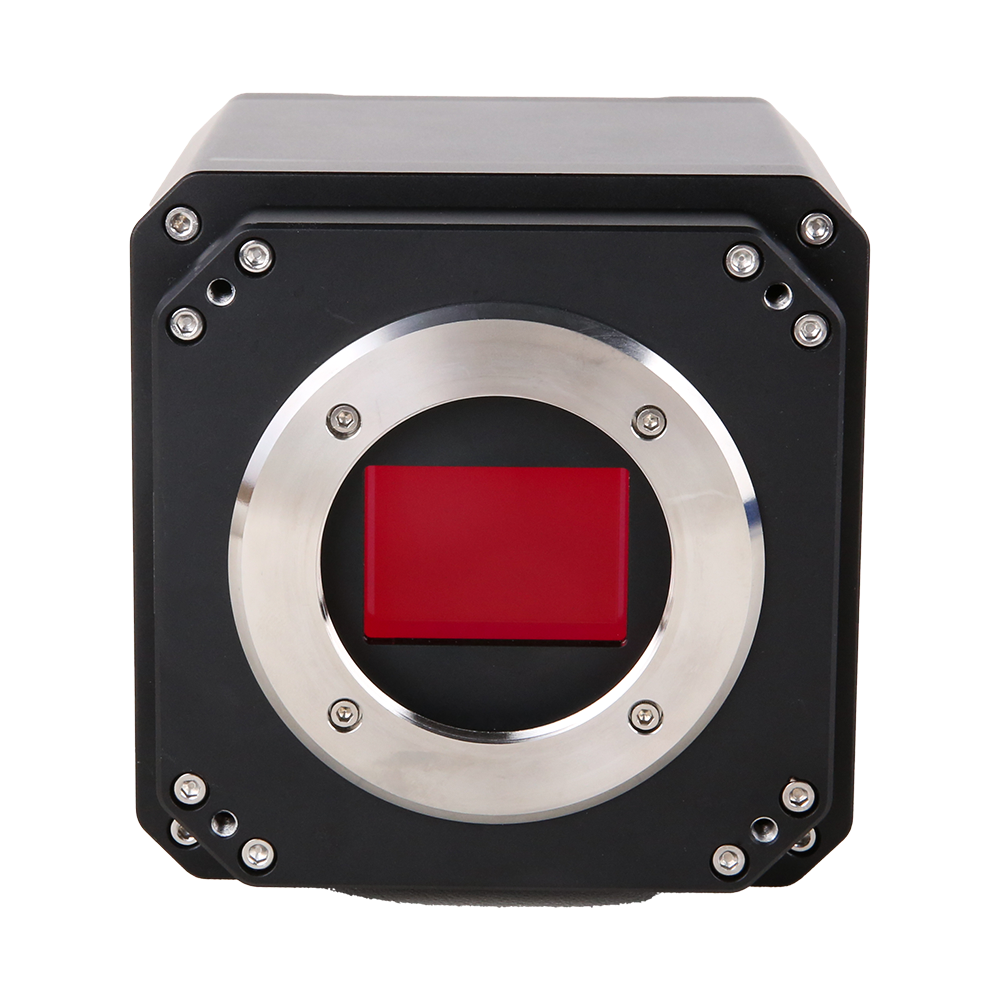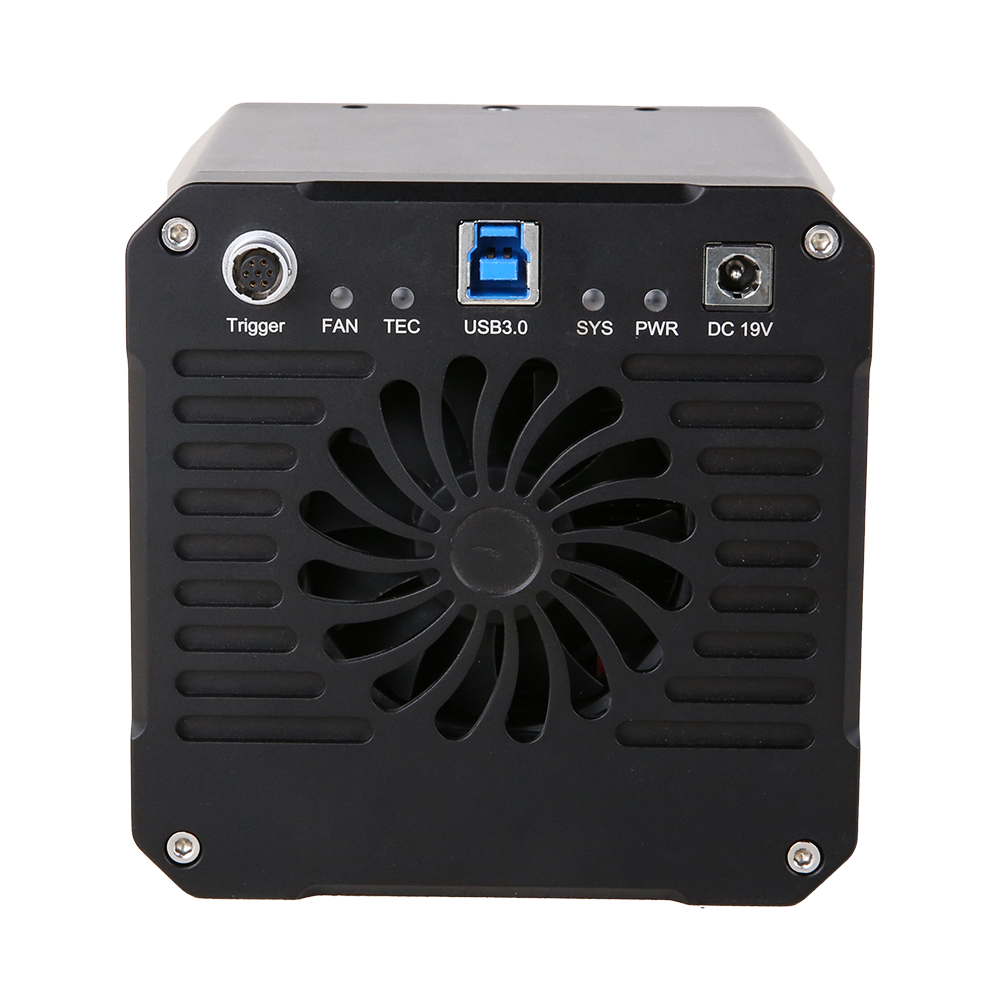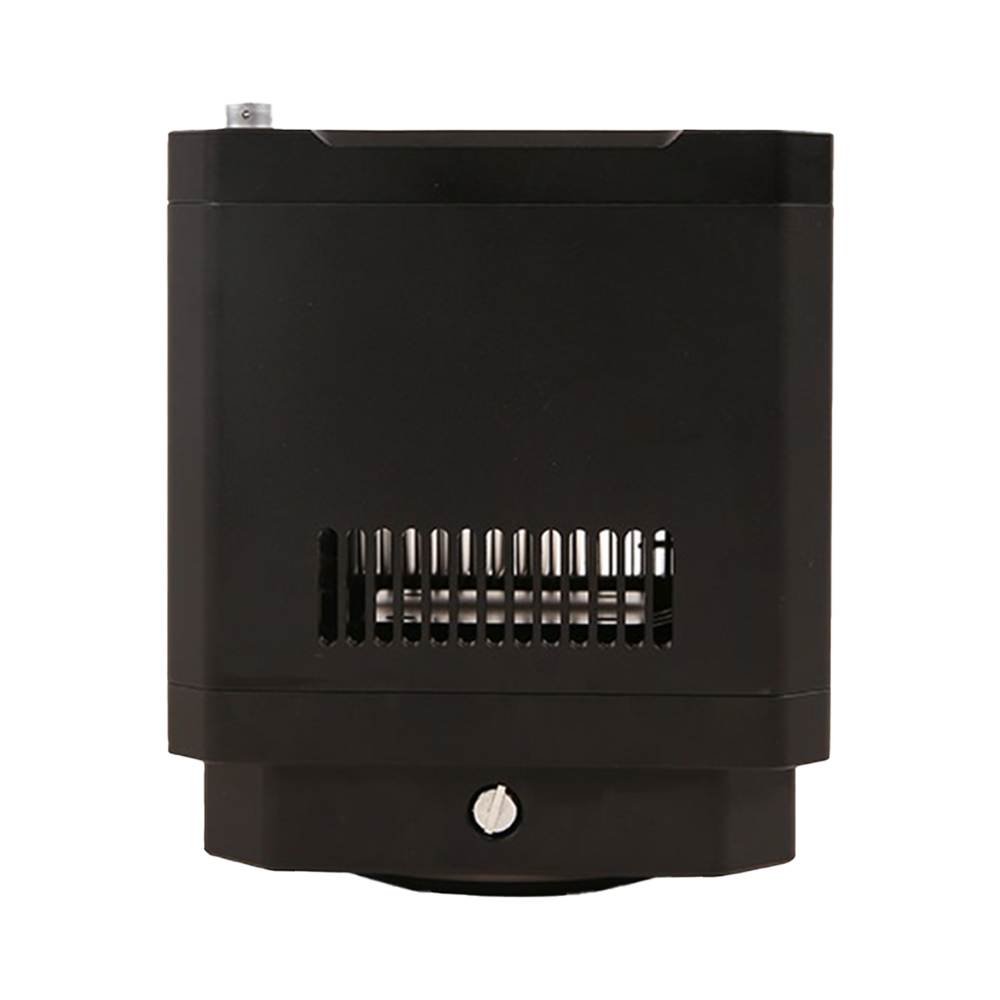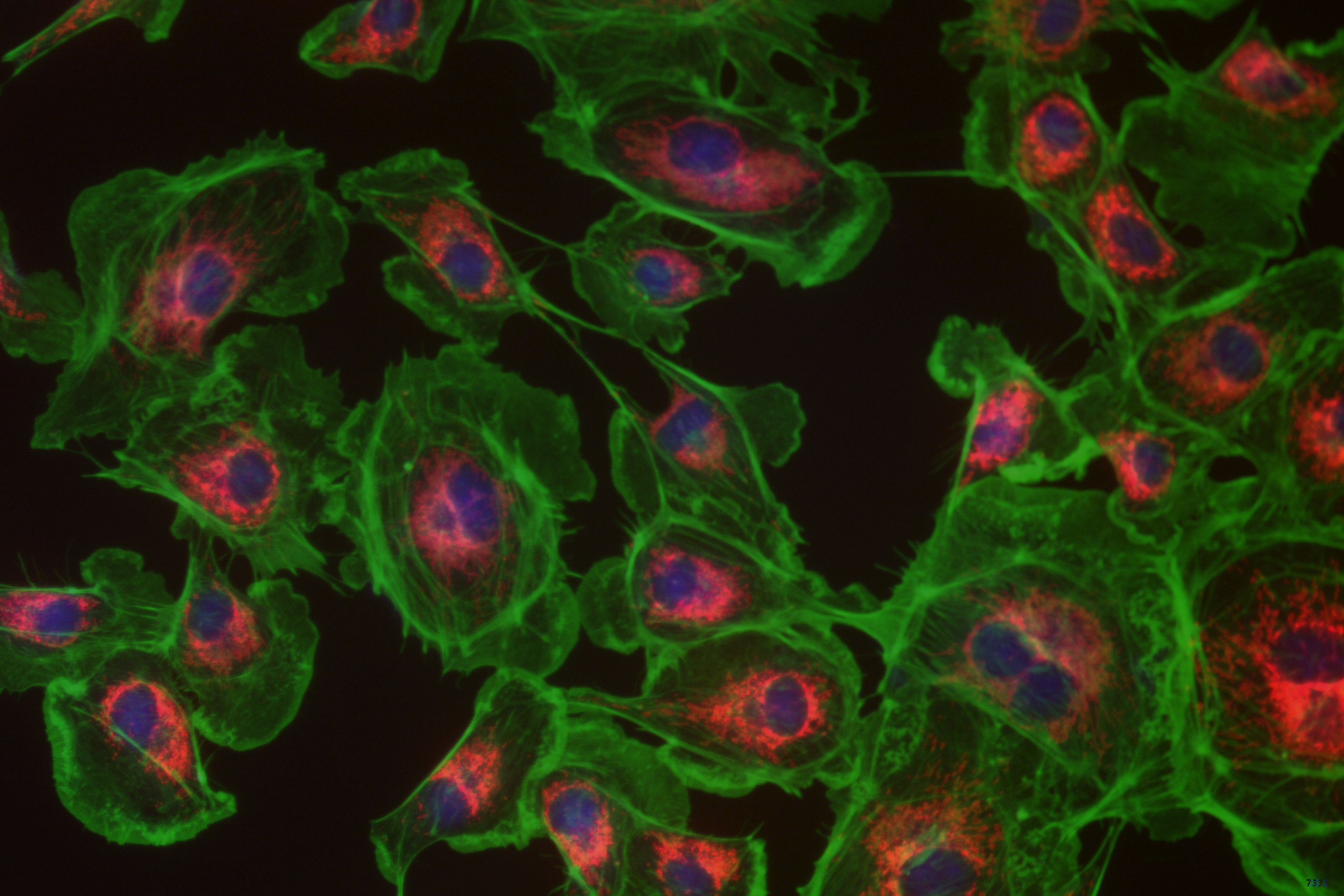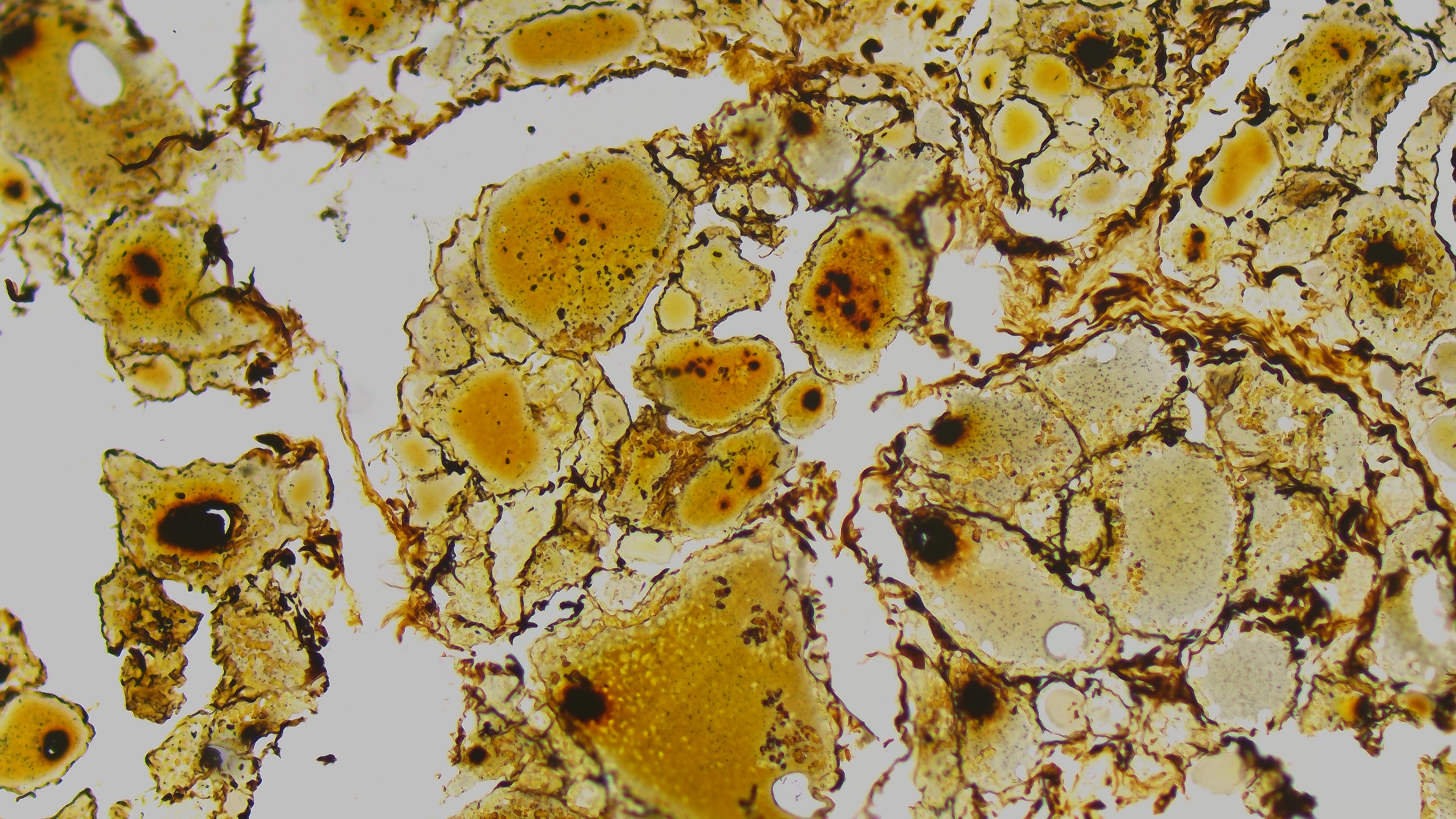MAX Series
Product Introduction
The MAX series addresses high-resolution and low-light long-exposure scientific imaging requirements, utilizing high-performance full-frame/large pixel sensors including Sony Exmor and GSENSE for applications spanning visible to near-infrared. The cameras feature efficient TEC cooling with closed-loop temperature control, achieving sensor operating temperatures approximately 40 °C below ambient, complemented by anti-condensation optical structures to ensure imaging stability and low dark current during low-temperature and long-exposure operations.
Regarding data connectivity, the series provides multiple high-speed interfaces including USB3.0 and 10GigE (model-dependent), supporting multi-bit depth output (8/10/12/16-bit, model-dependent) and built-in buffering to meet high-bandwidth and extended acquisition requirements. The cameras support free-running, software/hardware triggering, and multi-camera synchronization, configured with industrial-grade I/O for seamless integration with external illumination, motion control, and acquisition systems.
Comprehensive ToupView/ToupLite software and cross-platform SDK support (Windows/Linux/macOS; C/C++/C#/Python, etc.) facilitate system integration and secondary development, suitable for fluorescence microscopy, spectral measurement, astronomical observation, semiconductor inspection, and other scientific/industrial applications.
Product Features
- Sensors: Sony Exmor/GSENSE full-frame or large pixel sCMOS (model-dependent)
- Resolution coverage approximately 4.2–251 MP, sensor formats from 1.2″ to 4.2″ (model-dependent)
- Spectral response covering visible/NIR/UV (model and packaging dependent)
- TEC deep cooling with closed-loop temperature control, typical ΔT ≈ 40 °C (below ambient), significantly reducing dark current
- Anti-condensation optical structure, effectively suppressing condensation during low-temperature and long-exposure conditions
- Multi-interface: USB3.0/10GigE (model-dependent)
- Multi-bit depth output: 8/10/12/16-bit (model-dependent), enhancing weak signal resolution and dynamic range
- Built-in buffering ensuring data stability during high-bandwidth and extended acquisition (model-dependent)
- Trigger modes: free-running, software trigger, external hardware trigger; supporting multi-camera synchronization and timing coordination
- Image functions: ROI, directional flip, Binning, HDR/Global Reset, etc. (model-dependent)
- Industrial-grade I/O: optically isolated input/output and programmable GPIO (model-dependent)
- Power supply and consumption optimization, supporting extended stable operation (model-dependent)
- Bundled ToupView/ToupLite; providing Windows/Linux/macOS SDK (C/C++/C#/Python, etc.)
- Supporting field firmware upgrade
- Compliant with CE/FCC/RoHS certifications (model-dependent)
Product Models
Choose the best MAX Series model for your application needs
| Model | Sensor | Resolution | Pixel Size | Frame Rate | Data Interface | Dynamic Range | Action |
|---|---|---|---|---|---|---|---|
| MAX251AM-10G |
IMX811ALR (M,RS)
66.24 mm × 44.16 mm
|
251M (19200×12800) | 2.81 µm × 2.81 µm |
1.5 fps@19200×12800
|
10GigE |
-
|
View Details |
| MAX251AC-10G |
IMX811AQR (C,RS)
66.24 mm × 44.16 mm
|
251M (19200×12800) | 2.81 µm × 2.81 µm |
1.5 fps@19200×12800
|
10GigE |
-
|
View Details |
| MAX151AM-10G |
IMX411ALR (M,RS)
53.30 mm × 40.01 mm
|
151M (14176×10640) | 3.76 µm × 3.76 µm |
6.1 fps@14176×10640
6.9 fps@7072×5320
20.8 fps@4704×3546
61.9 fps@1568×1178
|
10GigE |
-
|
View Details |
| MAX151AC-10G |
IMX411AQR (C,RS)
53.30 mm × 40.01 mm
|
151M (14176×10640) | 3.76 µm × 3.76 µm |
6.1 fps@14176×10640
6.9 fps@7072×5320
20.8 fps@4704×3546
61.9 fps@1568×1178
|
10GigE |
-
|
View Details |
| MAX102AM-10G |
IMX461ALR (M,RS)
43.80 mm × 32.87 mm
|
102M (11648×8742) | 3.76 µm × 3.76 µm |
8.7 fps@11648×8742
8.7 fps@5824×4370
27.8 fps@3872×2912
82.5 fps@1280×970
|
10GigE |
-
|
View Details |
| MAX102AC-10G |
IMX461AQR (C,RS)
43.80 mm × 32.87 mm
|
102M (11648×8742) | 3.76 µm × 3.76 µm |
8.7 fps@11648×8742
8.7 fps@5824×4370
27.8 fps@3872×2912
82.5 fps@1280×970
|
10GigE |
-
|
View Details |
| MAX04AM |
GSENSE2020e (M,NIR,RS)
13.31 mm × 13.31 mm
|
4.2M (2048×2048) | 6.5 µm × 6.5 µm |
45 fps@2048×2048
45 fps@1024×1024
|
USB3.0 |
81.6 dB
|
View Details |
| MAX04BM |
GSENSE2020BSI (M,UV,RS)
13.31 mm × 13.31 mm
|
4.2M (2048×2048) | 6.5 µm × 6.5 µm |
45 fps@2048×2048
45 fps@1024×1024
|
USB3.0 |
79.1 dB
|
View Details |
| MAX04CM |
GSENSE400BSI (M,UV,RS)
22.53 mm × 22.53 mm
|
4.2M (2048×2048) | 11 µm × 11 µm |
44 fps@2048×2048
44 fps@1024×1024
|
USB3.0 |
93.9 dB
|
View Details |
| MAX151AM-U3 |
IMX411ALR (M,RS)
53.30 mm × 40.01 mm
|
151M (14176×10640) | 3.76 µm × 3.76 µm |
2.4 fps@14176×10640
6.9 fps@7072×5320
20.8 fps@4704×3546
61.9 fps@1568×1178
|
USB3.0 |
-
|
View Details |
| MAX151AC-U3 |
IMX411AQR (C,RS)
53.30 mm × 40.01 mm
|
151M (14176×10640) | 3.76 µm × 3.76 µm |
2.4 fps@14176×10640
6.9 fps@7072×5320
20.8 fps@4704×3546
61.9 fps@1568×1178
|
USB3.0 |
-
|
View Details |
| MAX102AM-U3 |
IMX461ALR (M,RS)
43.80 mm × 32.87 mm
|
102M (11648×8742) | 3.76 µm × 3.76 µm |
3.5 fps@11648×8742
8.7 fps@5824×4370
27.8 fps@3872×2912
82.5 fps@1280×970
|
USB3.0 |
-
|
View Details |
| MAX102AC-U3 |
IMX461AQR (C,RS)
43.80 mm × 32.87 mm
|
102M (11648×8742) | 3.76 µm × 3.76 µm |
3.5 fps@11648×8742
8.7 fps@5824×4370
27.8 fps@3872×2912
82.5 fps@1280×970
|
USB3.0 |
-
|
View Details |
| MAX62AM |
IMX455 (M, RS)
35.98 mm × 23.99 mm
|
61M (9568×6380) | 3.76 µm × 3.76 µm |
6.1 fps@9568×6380(16-bit)
19.1 fps@4784×3190
55.6 fps@3184×2124
191 fps@1040×706
|
USB3.0 |
88.3 dB
|
View Details |
| MAX62AC |
IMX455 (C, RS)
35.98 mm × 23.99 mm
|
61M (9568×6380) | 3.76 µm × 3.76 µm |
6.1 fps@9568×6380(16-bit)
19.1 fps@4784×3190
55.6 fps@3184×2124
191 fps@1040×706
|
USB3.0 |
85.8 dB
|
View Details |
| MAX24AC |
IMX410 (C, RS)
36.02 mm × 24.00 mm
|
24M (6064×4040) | 5.94 µm × 5.94 µm |
15.3 fps@6064×4040(14-bit)
41 fps@3024×2012
114 fps@2016×1342
|
USB3.0 |
87.3 dB
|
View Details |
Frequently Asked Questions
Learn more about scientific-grade CMOS camera expertise
- Ultra-low readout noise: sCMOS readout noise approaches 1e⁻, significantly better than traditional CCD
- High frame rates: Parallel readout architecture supports frame rates up to 100fps or higher
- Wide dynamic range: Can simultaneously image bright and dark regions with dynamic range reaching tens of thousands to one
- Large field of view and high resolution: Suitable for high-resolution large field of view imaging requirements
EMCCD cameras are better suited for extremely low light or long exposure applications.
sCMOS cameras offer better cost-effectiveness for high-resolution, high frame rate applications requiring low noise.
In-Depth Product Introduction
sCMOS Sensor Architecture
Each pixel is equipped with independent amplifiers and column-level ADCs, enabling parallel readout for high-speed, high signal-to-noise ratio imaging. Dual gain channels and dual ADC designs further enhance dynamic range and sensitivity.
Low Noise + Wide Dynamic Range
Typical sCMOS noise is less than 2 e⁻ at 30fps, with dynamic range reaching 50,000:1, significantly exceeding traditional CCD performance.
Fast Readout and Versatility
Parallel readout architecture supports high frame rates (greater than 100fps), suitable for high-speed event capture such as cell movement, fluorescence lifetime, plasma changes, and more.
Low Light Imaging Capability
Back-illuminated sCMOS sensors can achieve quantum efficiency greater than 95%, performing excellently from UV to near-infrared ranges, with low fixed pattern noise and cooling capabilities down to -30°C for astronomical observations.
Application Scenarios and System Value
Suitable for fluorescence microscopy, astronomical imaging, cold atom research, X-ray imaging, materials testing, industrial microscopy, and various scientific research and industrial fields, providing high sensitivity, high precision, and high adaptability system advantages.
Primary Application Areas
Applications of scientific cameras (sCMOS) across various fields
sCMOS Technical Advantages Summary
- Ultra-low readout noise (<2e⁻)
- High frame rates (>100fps)
- Wide dynamic range (50,000:1)
- High quantum efficiency (>95%)
- Large field of view high resolution
- Cooling capability (-30°C)
- Parallel readout architecture
- Multi-purpose scientific adaptability

